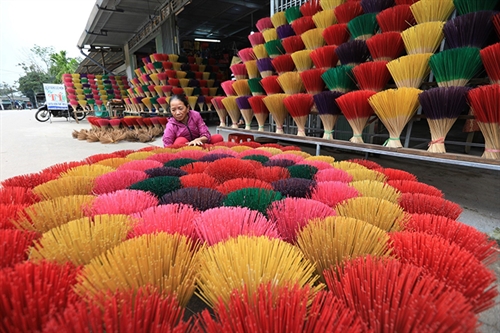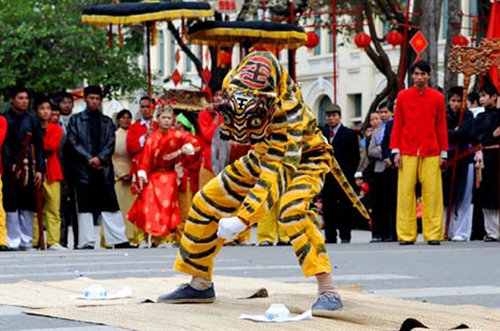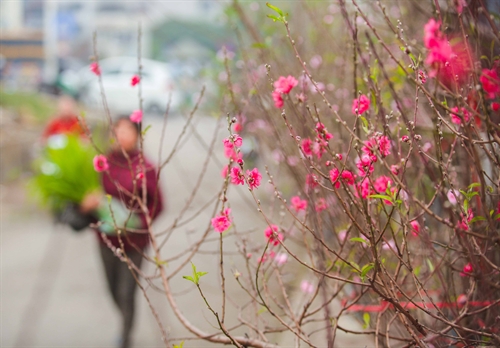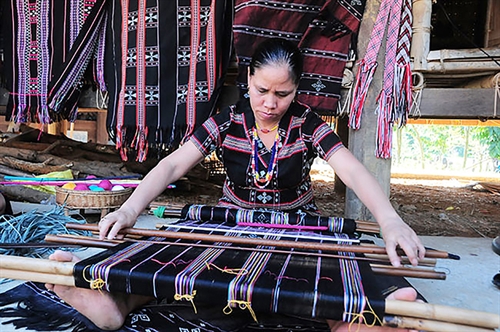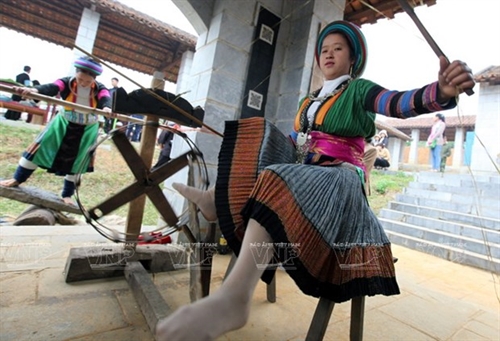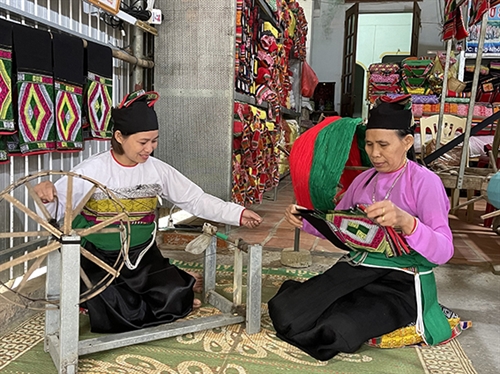Conical hats or non la have been made and worn by Vietnamese people for some 3,000 years. Images of people wearing conical hats are depicted on Ngoc Lu bronze drums. Along with their long history, conical hats remain popular today and are now considered a symbol of Vietnamese culture.
Thanks to their special design, conical hats can protect wearers from the sun and rain. But importantly, it is also fashionable. When wearing traditional dresses - ao dai or ao ba ba, Vietnamese women often use conical hats as an accessory, either wearing or carrying them.
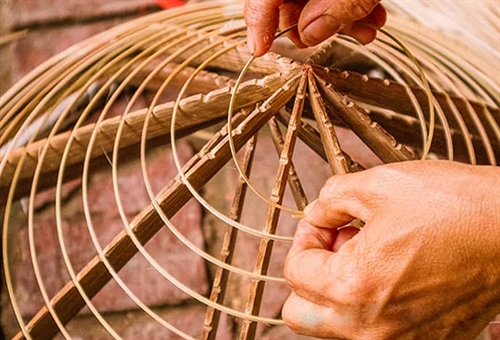 |
| Making hat frames from bamboo sticks__Photo: //gotrangtri.vn |
Each region in the country has a well-known conical hat-making village. The conical hat of the Tay has a distinctively red color while that in Thanh Hoa differs from others with a 20-hem frame. Hats made by Chuong village in the capital city of Hanoi are shiny and light while products of Tay Ho village in the central province of Thua Thien Hue are thin and elegant, contrary to the thick ones from Phu Gia village in the south central province of Binh Dinh.
A conical hat looks simple but the making must go through various steps from collecting, drying and ironing material leaves and making bamboo frames to weaving. The most important material for making conical hats is leaves, usually coconut leaves or green palm leaves. Other materials include bamboo, used for making hoops or hems and frames, and pineapple roots, used as threads, which are nowadays replaced with plastic threads.
First, material leaves are sun-dried and then soaked in water for about three hours and hung out overnight until they become soft and turn into beautiful ivory color. Then, material leaves are ironed at warm temperature to have a new look, and become smoother and nicer.
To turn material leaves into a conical hat, the hat maker whittles thin round bamboo slats and bends them around a frame holder of 16 hems of different diameters. A hat is usually made from two layers of leaves sown together with thin plastic thread. When sewing, the hat maker also adds two fringe hangings on the underside of the hat for wearers to tie a colorful silk ribbon for use as a chin trap.
When the sewing is complete, the hat maker adds the finishing touch on the hat, applying a thin coat of varnish made of turpentine mixed with alcohol to increase its gloss, durability and waterproofing.
Although conical hat makers use the same materials and techniques, there are slight differences in the making process.
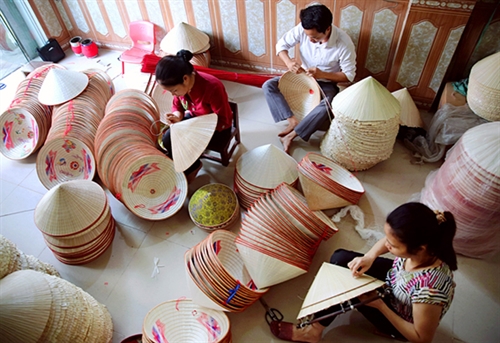 |
| Weaving palm leaves__Photo: //gotrangtri.vn |
Located in Thanh Oai district, Hanoi, Chuong village is well-known for gloss, light conical hats in northern Vietnam. In order to help their products become more weather-resistant, Chuong village’s hat makers often sew three layers of green palm leaves. This is a very difficult technique as three layers of leaves will likely make the hat thick and heavy while most customers prefer thin and light ones.
In the meantime, artisans of the Tay Ho village in Phu Van district, Thua Thien Hue province, use coconut or local “goi” leaves to make the province’s well-known “poem” conical hats.
A “poem conical hat” is made from two layers of leaves with a translucent paper inscribed with poems and drawings inserted between them. The poems and images will appear when the hat is exposed to direct sunlight, giving it the name of “poem conical hat”.
Different from Chuong and Tay Ho villages, Phu Gia village in Phu Cat district of Binh Dinh province is well-known for its horse conical hats or non ngua, which have silver or copper caps carved with dragon, unicorn, tortoise and phoenix images - the symbol of braveness, imposingness and strength.
In the past, non ngua of Phu Gia village used to be associated with the image of King Quang Trung and his troops and later worn by mandarins and landlords when riding horses.
